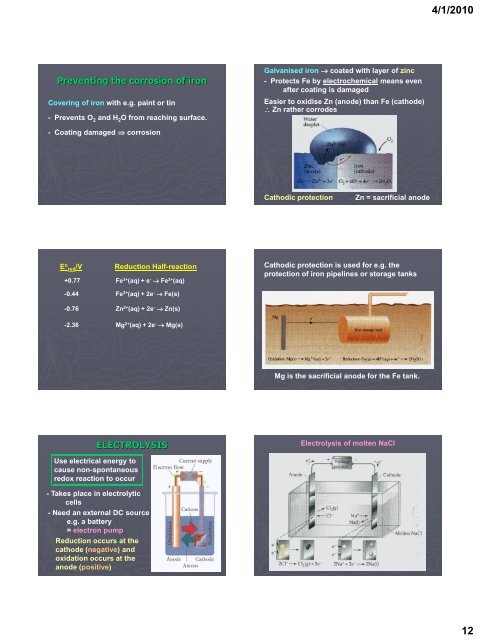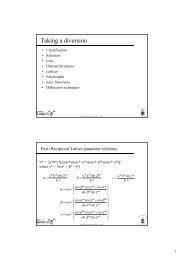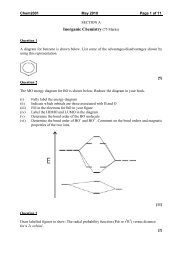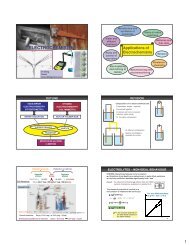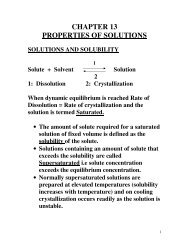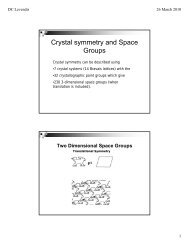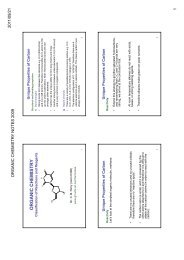ELECTROCHEMISTRY - Wits Structural Chemistry
ELECTROCHEMISTRY - Wits Structural Chemistry
ELECTROCHEMISTRY - Wits Structural Chemistry
You also want an ePaper? Increase the reach of your titles
YUMPU automatically turns print PDFs into web optimized ePapers that Google loves.
4/1/2010<br />
Preventing the corrosion of iron<br />
Covering of iron with e.g. paint or tin<br />
- Prevents O 2 and H 2 O from reaching surface.<br />
Galvanised iron coated with layer of zinc<br />
- Protects Fe by electrochemical means even<br />
after coating is damaged<br />
Easier to oxidise Zn (anode) than Fe (cathode)<br />
Zn rather corrodes<br />
- Coating damaged corrosion<br />
Cathodic protection<br />
Zn = sacrificial anode<br />
E o red/V<br />
Reduction Half-reaction<br />
+0.77 Fe 3+ (aq) + e - Fe 2+ (aq)<br />
Cathodic protection is used for e.g. the<br />
protection of iron pipelines or storage tanks<br />
-0.44 Fe 2+ (aq) + 2e - Fe(s)<br />
-0.76 Zn 2+ (aq) + 2e - Zn(s)<br />
-2.36 Mg 2+ (aq) + 2e - Mg(s)<br />
Mg is the sacrificial anode for the Fe tank.<br />
ELECTROLYSIS<br />
Electrolysis of molten NaCl<br />
Use electrical energy to<br />
cause non-spontaneous<br />
redox reaction to occur<br />
- Takes place in electrolytic<br />
cells<br />
- Need an external DC source<br />
e.g. a battery<br />
= electron pump<br />
Reduction occurs at the<br />
cathode (negative) and<br />
oxidation occurs at the<br />
anode (positive)<br />
12


